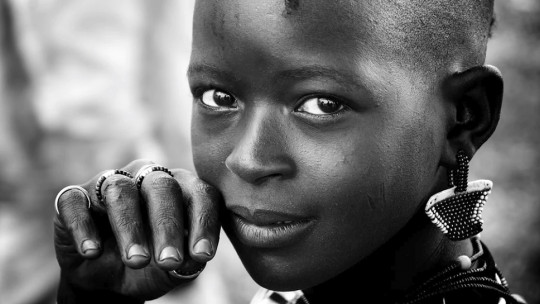Mobilization and cultural exchange are characteristic phenomena of general human societies. They have generated, among other things, the need to rearrange the ways of relating and identifying ourselves. Said rearrangement is a process that may seem simple, but is characterized by important experiences of astonishment, estrangement and even a certain discomfort; which we know as “cultural shock”.
Below we will see in more detail What is a culture shock, what elements make it up according to sociology and psychology and what are the stages by which it is characterized.
What is culture shock?
The term “shock” can refer to a violent confrontation, a confrontation, an impact, a friction, or a feeling of strangeness. In this sense, a “cultural shock” can be defined as a feeling of strangeness that occurs due to the confrontation between different cultures As it is a confrontation, the cultural clash can be visible from different phases and can also generate psychological and social conflicts.
For example, njnjf tell us that the term culture shock also refers to the state of disorientation and frustration generated by the recognition of the differences that exist between cultures. Such recognition may involve surprise, stress, anxiety, nostalgia, anger, uncertainty, helplessness, and a feeling of inadequacy.
On the other hand, García and Verdú (2008) tell us that cultural shock is an inherent and characteristic conflict of the global context of the 21st century, which among other things has been distinguished by a cosmopolitan discourse that defends the advantages of globalization and cultural exchange. These advantages, however, come together with a series of psychosocial elements that force the internalization of new norms and values, as well as the rearrangement of imaginaries and identities.
3 characteristic elements of culture shock
Culture shock is a phenomenon that occurs on the margins of the scene where the integration of different cultures takes place. For this reason, it is an experience that especially accompanies the migratory process, where it is inevitable to face new forms of communication, new social hierarchies, new identities and cultural codes
However, culture shock can occur beyond migration; for example, during the meeting of two people with different cultural ancestry but who have shared the same group of belonging since birth. In both cases, the cultural shock generates firstly strangeness and secondly the need to rearrange the codes of interaction. To explain this we will see below some elements that characterize culture shock
1. Language and communication
It is to be expected that one of the elements that can facilitate or hinder the experience of culture shock is language. Facing a different language and the communication difficulties that this poses is one of the factors that can cause culture shock to be experienced with greater or lesser intensity. The same can occur in non-verbal language elements such as gestures or postures or body shapes that are expected within one culture and not in another.
2. Modify the interaction codes
Communicative encounters are mediated by different interaction codes. Thus, a person who natively speaks the language of a destination, does not necessarily share the integration norms of that place
For the latter to take place, a negotiation of the interaction codes must also occur. For example, roles, ways of speaking or moving, ways of greeting or saying goodbye, gratitude, manners and space traffic rules, among others.
3. Identity
The above ultimately has an impact on the individual and collective identification process, that is, on the ethnic identity of origin that is necessarily articulated with the behavioral expectations of the destination culture.
The people involved modify their own representation of themselves through communicative encounters. In addition to linguistic and communicative skills, this representation includes tastes, desires, interests, lifestyles Likewise, it has to do with a process of rearranging the imaginaries of both the society of origin and the society of destination.
The cultural shock in the immigration process
As we have said, culture shock is a phenomenon that occurs almost inevitably in the migration process. For this reason, it is in this context that different studies from sociology and psychology have been developed. García and Verdú (2008), for example, tell us about 7 stages that are characteristic of the cultural shock surrounding the migratory event.
Specifically, these stages have to do with the evolution of the imaginary of the reference society and the society to which the person who migrates belongs :
1. Idealization
Initially there is a utopia about international migration; where fantasy images about migratory processes are articulated (which have to do with the idea of “better opportunities” and “trying your luck”), with the imaginaries of the society of origin that are generally negative
2. Frustration
A stage of disillusionment or frustration follows, where initial illusions or aspirations are confronted with systems of exclusion and real difficulties for integration.
3. Longing
A phase of idealization of the place of origin continues, which is characterized by a process is missed by family or friends and the codes that are part of the reference communicative encounter.
4. Fusion
After idealization and before permanence in the place of destination, the process of maintaining certain cultural practices occurs, and at the same time incorporating practices of the society of belonging.
5. Solidarity
The above converges with new survival strategies, which consist of create migratory support networks , often focused on the nuclear family. At the same time there is a process of psychological adaptation and cultural learning of the knowledge and skills that are necessary for socialization.
6. Settlement
As an outcome, the need to articulate the feeling of stability in the destination society (with the permanence of both positive and negative aspects) becomes visible, and its correlate that frequently goes in the opposite direction in the country of origin.









